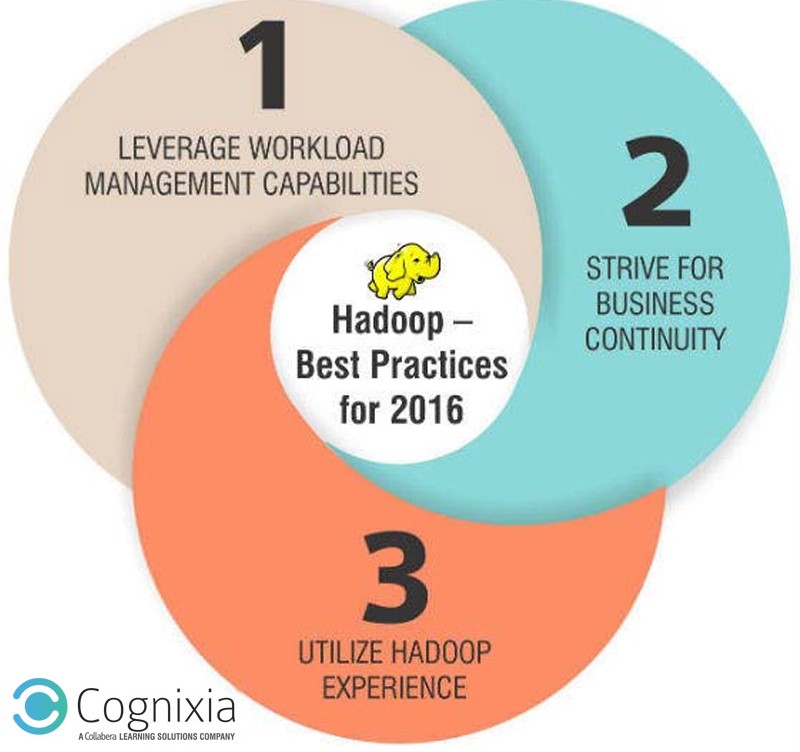It is completely natural if the possibilities afforded by Apache Hadoop YARN-based applications like Spark, Storm and Presto excite you in terms of providing great business value. Though, amidst this excitement, we shouldn’t miss on the actual tasks of managing and maintaining the environment. If the best practices to ensure performances and stability of a big data system are not taken into sincere consideration, then it might result in loss of faith and trust from business users in Hadoop. They might not consider it as a difference maker to the organization.
With an ever-increasing interest in the adoption of Big data application, it is imperative for the Hadoop environment to run optimally in order to meet end-user expectations. A Teradata company like Think Big runs Hadoop platforms for multiple customers across the world and suggests three best practices for 2016 which can help in improving your operations.

-
LEVERAGE WORKLOAD MANAGEMENT CAPABILITIES
Workload management is vital in a Hadoop environment. Why? This is due to wide usage of big data systems for production. Also, the requirements of business teams will be driving competition between various components for system resources.
Although you can deploy your Hadoop cluster as per the present guidelines by distribution provider, it should rather be configured according to your specific workload. It is up to the administrators to decide which users get what system resources and when to meet service levels by using YARN’s workload management capabilities.
Once administrators identify and adjust the workload management setting, they can schedule jobs to utilize the cluster resources to their full potential. This not only helps in keeping the Hadoop cluster’s footprint to a proper extent but also boosts the adaptability; thus, matching resources according to changing business needs.
-
STRIVE FOR BUSINESS CONTINUITY
As valuable data is stored in Hadoop, regular system availability and data protection become more and more important. However, it should be noted that for the protection of vital data sets from disaster, Hadoop’s data replication capabilities alone aren’t enough. There is a standard three-way replication which can prove to be sufficient for the protection of different data from getting corrupted or being lost, but still, it is not an adequate backup and disaster recovery strategy.
The replication feature in Hadoop is designed to enforce better fault tolerance and data locality while processing. There are certain inevitable problems which arise despite having three copies of the data in the same rack. This makes it even more important to take data backup on a daily basis for another data centre to store it by using data archive tools or cloud. Such efforts keep natural disasters at bay and simultaneously, protect the information from cyber attacks and other unpredictable happenings.
If you wish to maintain business continuity, then you should always remember about NameNode backup. The function of NameNode is to store a directory tree of files in HDFS and recording data in the cluster. It is a single point of failure, and it takes a lot of time to build the NameNode from the start which exposes the data to the risk of being lost. Thus, it becomes necessary to backup not only the business data but also the NameNode, as the production system grows.
Critical applications which are dependent on Hadoop resources also need a high-availability strategy. This means that there should be a plan which can be acted upon quickly so as to make sure that the production workloads aren’t disturbed by unpredictable incidents. Make sure that you include a process to rebuild the data sets from raw sources and/or restorable offline backups of the data which cannot be replaced.
-
UTILIZE BIG DATA HADOOP EXPERIENCE
There has never been and never will be a substitute for experience. No matter how many detailed documentation you have on Hadoop architecture or even if you are through with the daily monitoring tasks and issue resolutions, there is no replacement for experience. Even in the case of applying support processes being documented, challenges are bound to arise and this is where experience comes in handy. A specific skill set is needed to administer and develop on big data open-source platforms, far beyond the knowledge of a typical Database Analyst.
Along with the Hadoop administration, experience the team working on big data application support should be equipped with solid technical knowledge in order to adapt to unusual issues. You must always have a senior professional on the team who can help in resolving the thorniest challenges. Ideally, this professional will have the extraordinary know-how of custom application development in Hadoop and strong Linux skills. Also, he/she would be able to troubleshoot complex problems.
So, these are three best practices for Hadoop which you can follow as a Hadoop professional to benefit your organization. There is a lot more to Hadoop than these tips and pointers which a person can learn about by undergoing Hadoop training. Cognixia provides the finest training on Hadoop Development and Hadoop Administration. We have experienced trainers who guide you through the entire Hadoop environment and acquaint you with its cluster. Hadoop is a Big Data skill which is continuously in demand by the industry and has a bright future. Join one of our training on Hadoop and give your career the required push.
For further information, you can write to us




